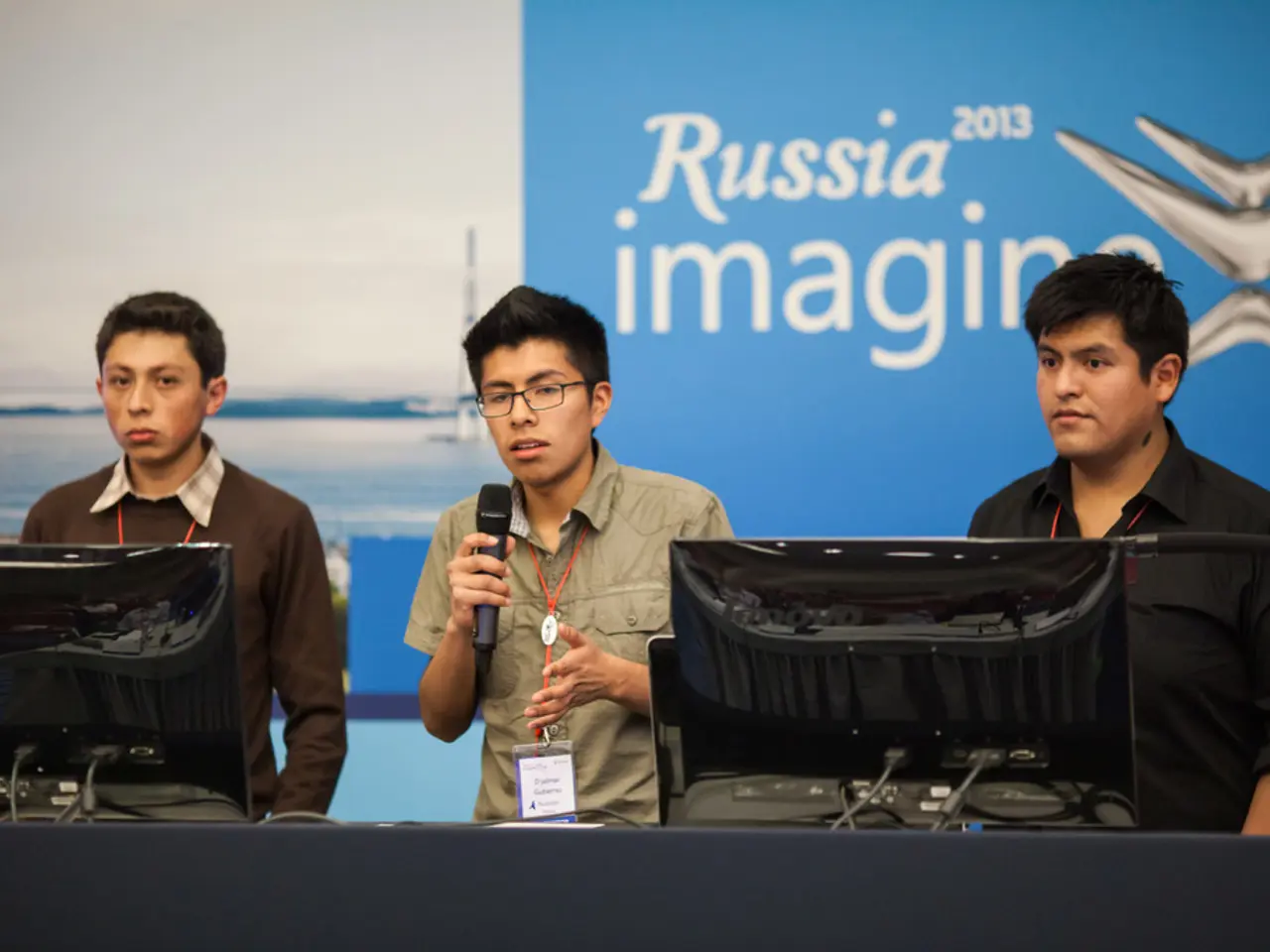Elon Musk's company, xAI, predicts a goal of amassing 50 million AI GPUs comparable to the H100 model within the next five years, with 230,000 GPUs already in operation, including 30,000 high-end GB200s, for the purpose of training Grok.
In the rapidly evolving world of artificial intelligence (AI), companies like Nvidia are pushing the boundaries of what is possible with their cutting-edge AI accelerators. However, as these technologies advance, the energy demands of AI training facilities are becoming increasingly significant.
Nvidia's latest offering, the B300, boasts a two-fold increase in performance for BF16 and TF32 formats for AI training compared to its B200 GPUs. This progress is part of Nvidia's strategy to follow a yearly cadence of new AI accelerator releases, similar to Intel's Tick-Tock model.
With this pace of innovation, Nvidia aims to deliver 50 FP16/BF16 ExaFLOPS for AI training by 2030. Assuming Nvidia can achieve the same performance increases with its four subsequent generations of AI accelerators based on the Rubin and Feynman architectures, around 650,000 Feynman Ultra GPUs will be needed.
The power consumption of a single cluster of Rubin Ultra GPUs is around 9.37 GW, comparable to the power consumption of French Guiana. Given that these Feynman Ultra GPUs are estimated to have about twice the performance per watt compared to older Rubin architecture GPUs, around 4.685 GW of electrical power is estimated to be needed to power a 50 ExaFLOPS AI training data center equipped with 650,000 Feynman Ultra GPUs.
This translates to needing roughly five nuclear power plants to provide sufficient electricity for such a data center. For context, 50 million NVIDIA H100 GPUs (at 700 W per chip) would require about 35 GW, equivalent to 35 nuclear power plants.
The energy demands of these facilities are a testament to the enormous infrastructure and energy challenges of ultra-large-scale AI training facilities. Elon Musk's xAI, for instance, plans to build infrastructure to power 50 million H100 GPU equivalents for AI use over the next five years.
xAI is already operating the Colossus 1 supercluster, which uses 200,000 H100 and H200 accelerators. The company aims to build the Colossus 2 cluster, consisting of over a million GPUs, with the first nodes set to come online in the coming weeks.
As we move towards a future where AI is an integral part of our daily lives, the energy requirements of these facilities will undoubtedly be a critical factor to consider. The challenge lies in finding sustainable and efficient solutions to power these massive computing loads.
- The finance sector and wealth-management industries are monitoring the energy consumption trends in AI training facilities, particularly in light of Nvidia's ambitious plans to power their AI data centers with sufficient electricity equivalent to five nuclear power plants.
- As AI technology advances, its incorporation into personal-finance apps, business processes, and data-and-cloud-computing services is expected to increase, which raises concerns about the financial implications of the substantial energy requirements for AI training facilities.
- With AI-driven gadgets becoming more prevalent in our lives, the emphasis on finding sustainable solutions in cybersecurity, technology, and artificial-intelligence industries is growing, as the potential for energy mismanagement could threaten data security and organizational wealth.
- Investing in renewable energy technologies and energy-efficient AI accelerators has become a priority for businesses in the industry and finance sectors, as reducing energy consumption and carbon footprint will lead to cost savings and improved sustainability ratings.
- Key players in the industry, such as Nvidia and Elon Musk's xAI, are actively pursuing collaborations with technology companies specializing in energy storage, solar power, and wind power to create a more eco-friendly infrastructure for AI facilities and make their operations more sustainable.




